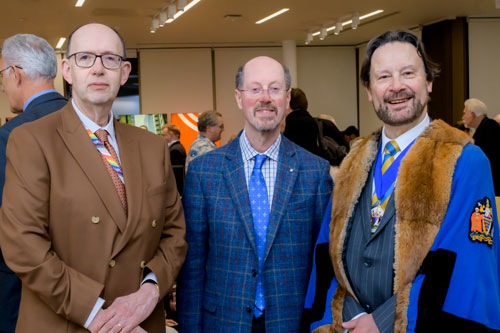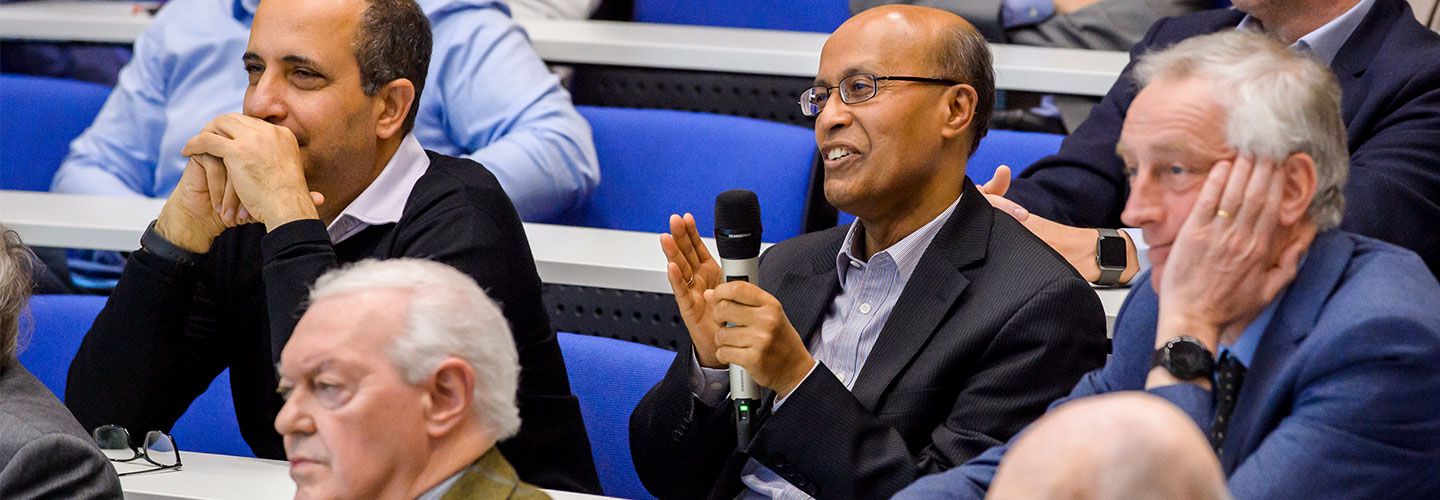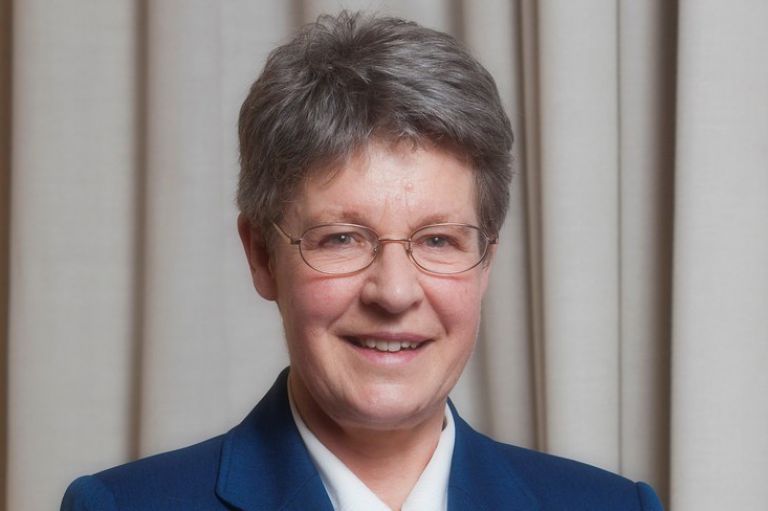Distinguished physicist Professor Martin Dawson gives lecture on the Fraunhofer research and development model to explain innovations and potential uses of laser-based instrumentation.
By Eve Lacroix (Senior Communications Officer), Published
The 45th edition of the Edwards Lecture took place on campus on 15 February, delivered by Professor Martin Dawson FRSE FRS on the topic of innovation in laser-based instrumentation under the Fraunhofer model.
Professor Dawson is a distinguished physicist known for his work on lasers and compound semiconductors and was appointed the inaugural Head and Director of Scientific Research of the Fraunhofer Centre for Applied Photonics (Fraunhofer CAP) in 2012.
The Centre is part of the larger Fraunhofer Society, which is the largest network of applications-oriented research organisation in Europe. Fraunhofer CAP is the only Fraunhofer subsidiary based in the UK. The Centre’s particular focus is photonics, laser and optical technologies.
Professor Dawson is also the Director of Research in the University of Strathclyde’s Institute of Photonics. Together, these organisations employ over 100 staff, PhD and EngD students and have to date had funded collaborations with over 150 companies.
The event marked the 50th anniversary of the first lecture on the subject of optical science and engineering, given in 1972 by Nobel Laureate Professor Dennis Gabor FRS.
Professor Dawson discussed how the Fraunhofer research, funding and development model promotes innovation. He also explored innovations from Fraunhofer CAP especially in the optical and photonics areas including remote chemical and environmental sensing and quantum technologies and speculated on the organisation’s future developments and direction.
The Edwards Company, founded by F. D. Edwards, after whom the lecture is named, generously supported the lecture and the well-attended networking reception afterwards.
The Worshipful Company of Scientific Instrument Makers— of which F. D. Edwards was a past Master – has promoted the Edwards Lecture since its inception. Professor Philip Thomas, Master of the Company, concluded the lecture by thanking Professor Dawson and awarding him with a medal from the Livery Company commemorating his delivery of the lecture in 2023.

Laser research and future Fraunhofer applications
“Fraunhofer is in the business of research and experimental science,” said Professor Dawson.
He explained that the Fraunhofer model is a successful business model that places research organisations at the centre of a relationship between universities and industry. Fraunhofer organisations have their scientific vision informed by universities, and their R&D is informed by market demand.
Professor Dawson described the ‘stand-off detection’ capabilities of lasers which can be used to detect or diagnose dangerous or polluting substances from a distance. To do this, Fraunhofer CAP have used laser-based optical sensor technologies and are exploring innovative quantum technologies. Their system has made it possible to detect <0.1% hydrogen at ranges of tens of metres. These detectors have practical uses in places such as nuclear power plants and chemical plants, and clients have included BP, the UK Government, Airbus and many more.
The application areas for their inertial sensing and atom sensing include aircraft navigation and satellite GPS.
The Centre’s larger projects have included the creation of instruments capable of nanoscale alignment, waveguide writing and monolithic integration; and its miniature telescope systems have also been used in quantum computing.
Professor Dawson expressed optimism at innovations in the future. Quoting Nobel Laureate Dennis Gabor, who gave the second Edwards Lecture, he said: “The future cannot be predicted, but it can be invented.”
Speculating on future innovations, Professor Dawson identified technology able to manipulate the quantised states of matter, using superposition or entanglement and quantum technology. He predicted key emerging opportunities for Fraunhofer CAP’s laser-based instrumentation in the following fields:
- Quantum sensing, which includes research into atom sensors
- Quantum imaging and spectroscopy, which can be used underwater
- Quantum communications, which includes optical telescopes, photon sources and design for space and
- Quantum computing.
The Edwards Lecture Series
The Edwards Lecture Series is the longest running series in City, University of London’s history, with the first lecture given in 1970. The lecture series commemorates the work of F. D. Edwards, a physicist who worked at City's predecessor institution, the Northampton Institute.
In 1919 he founded the Edwards company, now a €3 billion turnover company and the leading vacuum engineering company worldwide, headquartered in the UK.
Professor Sir Anthony Finkelstein, President of City said:



